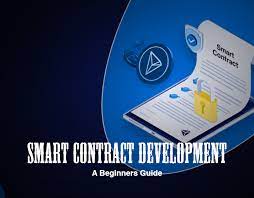At its core, Conflux is a next-generation blockchain that seeks to address scalability issues that plague existing blockchains. It is a high-performance public blockchain that has gained a lot of attention in recent times. The platform is built on top of a proof-of-work (PoW) consensus mechanism, but with some modifications that make it more efficient.
One of the most important features of Conflux is its smart contract capabilities. Smart contracts are self-executing contracts with the terms of the agreement between buyer and seller being directly written into lines of code. This means that once the conditions of the contract are met, the contract automatically executes itself, eliminating the need for intermediaries. If you are looking for a reliable trading platform, you may visit Immediate Connect.
In this comprehensive guide, we will dive deep into Conflux smart contract development, exploring its benefits, the tools required to build smart contracts on the platform, and the process of building a smart contract on Conflux.
Benefits of Conflux Smart Contract Development
- Scalability – Conflux can handle up to 3000 transactions per second, making it one of the most scalable blockchain platforms in the world.
- Low Transaction Fees – Conflux has low transaction fees, making it an ideal platform for developers looking to build decentralized applications with minimal cost.
- Security – Conflux is a secure blockchain platform that uses advanced cryptography to secure transactions and protect user data.
- Interoperability – Conflux is compatible with Ethereum Virtual Machine (EVM) contracts, which means that developers can easily migrate their existing Ethereum contracts to Conflux.
Tools Required for Conflux Smart Contract Development
To develop smart contracts on Conflux, developers need to have a good understanding of Solidity, the most popular programming language for building smart contracts on Ethereum. They also need to have a good understanding of the Conflux network and the tools required to build and deploy smart contracts on the platform.
The following are some of the tools required for Conflux smart contract development:
- Conflux Studio – Conflux Studio is an Integrated Development Environment (IDE) for Conflux smart contract development. It comes with a variety of tools that simplify the process of building and deploying smart contracts on the platform.
- Remix IDE – Remix IDE is an online development environment for building smart contracts. It supports Solidity and other programming languages, and it can be used to build smart contracts for Conflux.
- Conflux Portal – Conflux Portal is a browser extension that allows users to interact with Conflux dApps and smart contracts. It is compatible with major web browsers such as Chrome and Firefox.
Building a Smart Contract on Conflux
To build a smart contract on Conflux, developers need to follow these steps:
- Set up the development environment – This involves installing the necessary tools and configuring the environment for Conflux smart contract development.
- Write the Smart Contract – Developers need to write the smart contract using Solidity, the most popular programming language for building smart contracts on Ethereum.
- Compile the Smart Contract – Once the smart contract has been written, it needs to be compiled into bytecode that can be executed on the Conflux network.
- Deploy the Smart Contract – Once the smart contract has been compiled, it needs to be deployed on the Conflux network. This involves submitting the bytecode to the Conflux network and paying a small transaction fee.
Conclusion
In conclusion, Conflux (IMX) is a promising blockchain project that is focused on solving the scalability and security issues of blockchain technology. With its unique consensus algorithm and native token, the Conflux network is able to achieve high throughput and low latency while maintaining security and decentralization.
For developers looking to build decentralized applications, the Conflux smart contract platform offers a powerful and flexible toolset. With the ability to deploy and run self-executing programs on the blockchain, developers can create a wide range of innovative and decentralized applications.

